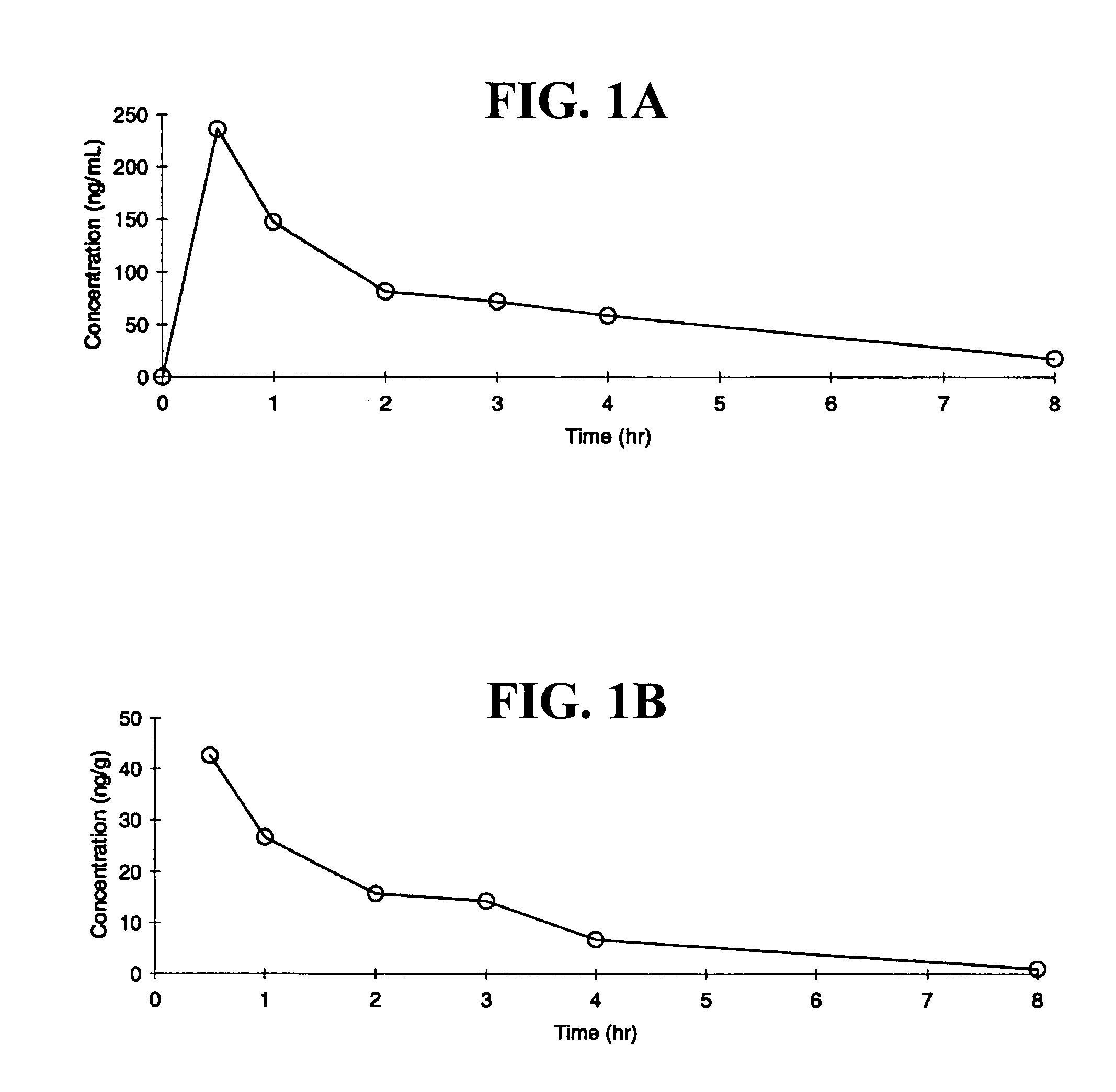Aspartyl protease inhibitors
- Summary
- Abstract
- Description
- Claims
- Application Information
AI Technical Summary
Benefits of technology
Problems solved by technology
Method used
Image
Examples
example 1
[0425]This example describes the enzyme assay for determining the apparent Ki of the compounds of the present invention.
[0426]The BACE enzyme used for inhibition analyses, BACE-HT, was produced from baculovirus-infected insect cells, and corresponded to the pro form of the soluble N-terminal protease domain (residues 22–454, starting from the N-terminal methionine), followed by a short linker and C-terminal 6×His tag.
[0427]Compounds were tested for their ability to inhibit BACE hydrolysis of the internally quenched fluorescent substrate, FS-1 (Ermolieff et al., Biochemistry 39:12450–12456 (2000)):[0428]FS1: NH2-Arg-Glu(EDANS)-Glu-Val-Asn-Leu-↓-Asp-Ala-Glu-Phe-Lys(DABCYL)-Arg-COOH[0429]FS-2: MOCAc-Ser-Glu-Val-Asn-Leu-↓-Asp-Ala-Glu-Phe-Lys(DNP)-Arg-Arg-COOH
where EDANS is 5-((2-aminoethyl)amino)napthalene-1-sulfonic acid; DABCYL is 4-((4-dimethylamino)phenyl)azo)benzoic acid; MOCAc is 7-methoxycoumarin-4-yl) acetic acid; and DNP is 2,4-dinotriphenylacetic acid.
[0430]FS-1 and FS-2 corre...
example 2
[0433]This example describes an illustrative set of cell-based assays for testing the ability of the compounds of the present invention to inhibit the secretion of the Aβ peptide from cells expressing high levels of the human amyloid precursor protein (“APP”).
[0434]A representative set of such cells include A-204 rhabdomyosarcoma cells, human embryonic kidney 293 cells transiently transfected with APP, Chinese hamster ovary cells stably transfected with APP(CHO2B7), and H4 neuroglioma cells stably transfected with APP(H4 β695 wt). The A-204 cells and HEK 293 cells were obtained from ATCC. For HEK 293 transient transfections, a pcDNA3 plasmid containing the human APP gene was obtained from Invitrogen, and cells were transfected with FuGENE 6 transfection reagent (Roche) following manufacturer's protocols. The CHO2B7 and H4 β695 wt lines were obtained from Mayo Clinic (J. Neuroscience Methods 108(2): 171–9 (2001)).
[0435]The following media were used for the cell lines: DMEM+glucose, g...
example 3
[0438]This example describes permeability experiments using MDCK cells.
[0439]MDCK cells, derived from canine kidney, were obtained from American Type Culture Collection (ATCC, Rockville, Md.). Cells were cultured in DMEM medium supplemented with 10% fetal bovine serum, 1 mM sodium pyruvate and 0.01 mg / ml gentamicin. Cells were maintained in a humidified atmosphere with 5% CO2 at 37° C. For transport studies, cells were plated at a density of 50×103 cells / cm2 on 0.4 μm pore size Transwell™ polyester membranes (Corning, Corning, N.Y.). Culture medium was replaced every two days until a tight cell monolayer was formed as measured by preliminary R123 permeability measurements. Compounds, 10 μM, were placed in either the apical or basolateral compartment and the amount of drug in the opposite chamber was measured using LC / MS / MS or fluorometry. The permeability coefficient was calculated using the following equation:
Papp=(1 / AC0)dQ / dt
where A=surface area of the cell monolayers, C0 is the i...
PUM
| Property | Measurement | Unit |
|---|---|---|
| Angle | aaaaa | aaaaa |
| Energy | aaaaa | aaaaa |
| Structure | aaaaa | aaaaa |
Abstract
Description
Claims
Application Information
 Login to View More
Login to View More - R&D
- Intellectual Property
- Life Sciences
- Materials
- Tech Scout
- Unparalleled Data Quality
- Higher Quality Content
- 60% Fewer Hallucinations
Browse by: Latest US Patents, China's latest patents, Technical Efficacy Thesaurus, Application Domain, Technology Topic, Popular Technical Reports.
© 2025 PatSnap. All rights reserved.Legal|Privacy policy|Modern Slavery Act Transparency Statement|Sitemap|About US| Contact US: help@patsnap.com



